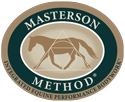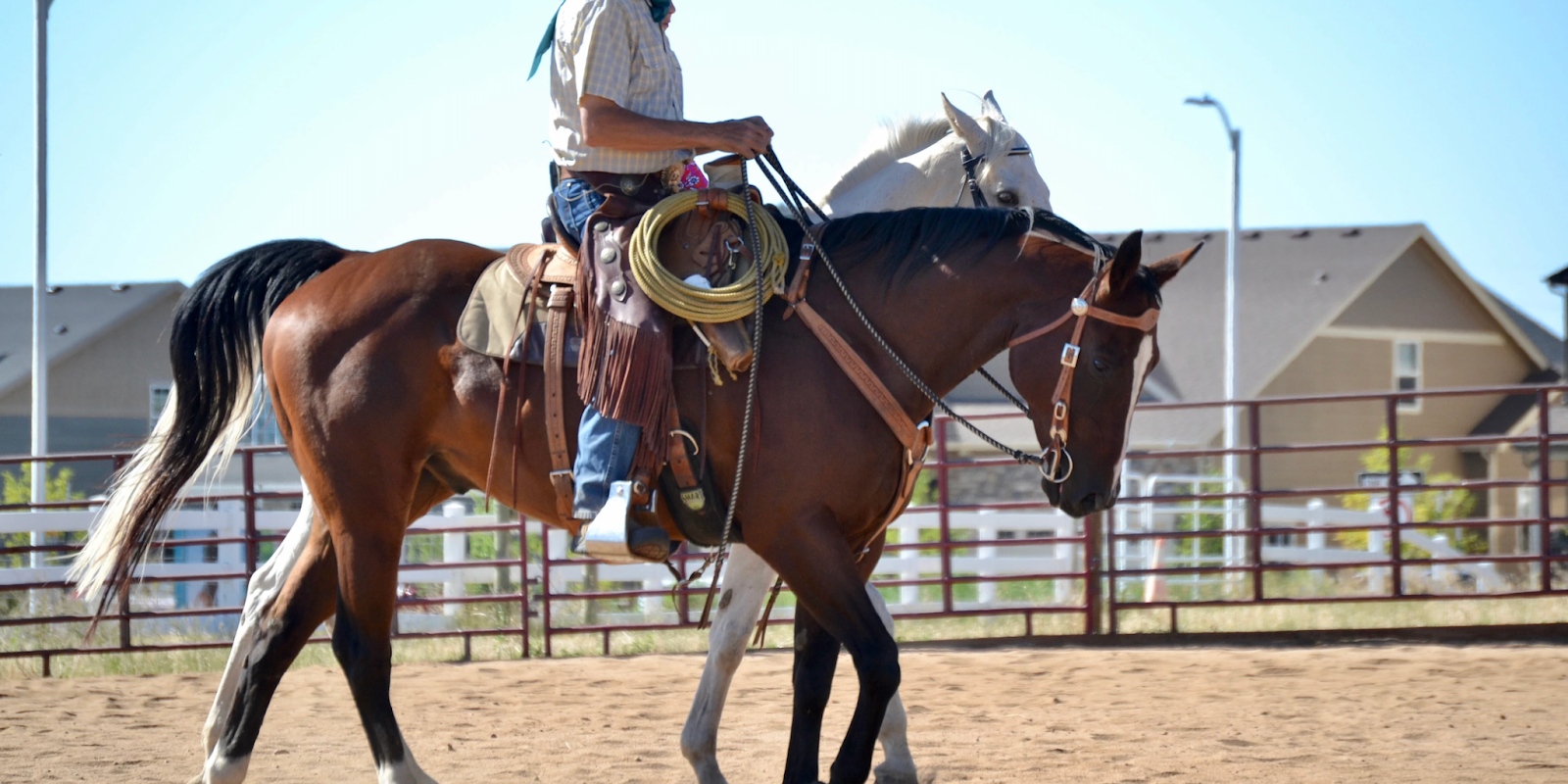by Crissi McDonald
This month, as we release the new 3-part video series ‘Perspectives on Softness and Connection’, with acclaimed horseman Mark Rashid and our very own Jim, we’re sharing ‘Uncovering Softness’, an article by Crissi McDonald, MMCP. Crissi is a clinician, author, photographer, and indie publisher, and she also happens to be married to Mark! This blog was originally published on her website in 2020 and honors the work she and Mark do with their horses.
First, an introduction to the story of their horse Top, by Crissi:
Within The Masterson Method® there are many principles that are in alignment with not only what I’ve learned and believe about horses, but also what I believe about life. One of the very first things I remember Jim saying during the weekend course my husband Mark and I attended was, “When in doubt, go softer.” No one else in the horse world (that I’d heard) had articulated a principle my husband and I live by.
In its simplest terms, softness begins on the inside of us and flows outward. What does this mean when giving bodywork to a horse? Many things, but most of all, an inner quiet that listens instead of tells, and asks instead of demands.
The following story is about our horse Top, and how we helped him feel safe enough to share his own softness (which could also be said as “heart”) with us.
Introducing Top
Mark beginning groundwork with Top
It was October, and Top stood quietly at the trailer while being groomed and saddled. When Mark bridled him and then gathered up the reins to see how Top would respond to pressure, it was clear that what Top knew was how to push. He raised his head really well too. Since these aren’t the responses we look for, Mark decided to work with Top from the ground until Top could begin to get the idea of how to let go.
Horses are already soft. They are born that way: receptive, aware, sensitive and willing. It is through our interactions with them that we either cover that up or keep it alive. We could see that Top was a nice horse who had learned to protect himself against the bit, the rider, or both. He wasn’t so defensive that he was acting out, but his defensiveness manifested itself as a constant and complete body tension. We also felt that he had learned to not say much when it came to interactions with people. Some might call this stoic. I often wonder, though, if a component of this is that he learned through consistent feedback that people are deaf so he kept how he felt to himself.
The Importance of Natural Balance & Softness with Horses
After groundwork on the first day, Mark took him back to the round pen and worked with him on the ground first before getting on. Top was more relaxed and looked more comfortable. It was all going really well until Mark asked Top to back up. Top put all of his weight on the right side of his body, moved his left foot back, threw his head to the left and almost fell over.
Top, 2019
We see this from time to time, not only in some of the ranch horses we buy, but also with horses at clinics. They’ve been tense and imbalanced for so long that imbalance becomes their balance. Add to this that Top was ridden in a curb bit, and it became apparent pretty quickly that he knew how to do something in the context of equipment, not because he knew how to do that particular skill with a rider.
What does that mean? That as long as Top could lean on or rely on the mechanics of the curb bit, the bit would help him do the job. It’s like the training wheels got left on the bike, and once we took them off, the bike toppled over. This isn’t to say that curb bits are bad, but I do know that in Top’s case, without the curb bit he didn’t know how to move his body in a relaxed and balanced way. As it turns out, he had some trouble with forward, turning, and stopping as well.
From Mechanical to Mindful Movement
It sheds a whole new light on how our horses learn, and what they learn. While outwardly Top could perform his job, when asked about the how, Top couldn’t answer. All he knew was which responses to the bit and which cues from the rider would get a release, but he couldn’t perform basic movements with any kind of balance in his own body. He had been trained so the outside of his body did certain tasks, but the rest of the horse wasn’t included.
These are also horses we sometimes see at clinics; outwardly skilled, but inwardly not involved in the movements. Most of the time these horses carry not only physical tension, but emotional and mental tension as well. Once we begin to show them how to balance themselves and involve them in the movement, as opposed to putting them into the movement, they begin to calm down.
Top is unlike other horses in that he is emotionally pretty balanced. We don’t often see or sense an “oh no” from him. When it does come up, if we stay quiet and give him time, he starts to re-engage with us and become curious. I’ve come to see that how he feels most of the time, and how his body performs are split. It’s not a common occurrence with horses; most of the time how they feel is how they act.
Softness With Horses & Balance through Consistency
Over the months that we traveled with Top to Arizona, North Carolina, Florida, and Texas, Mark worked on the same set of skills with him. Stop softly, turn softly, go forward softly, and back up softly. What all this meant was that Mark was looking for a certain feel through the reins from Top. He didn’t want a lot of pressure in his hands, nor did he want Top putting his nose to his chest. When we talk about self-carriage, what we would like to see is that a horse is able to engage their abdominals and balance themselves through any movement.
Mark and Top in 2020, one year later
At a recent clinic here in Colorado, I watched as Mark asked Top to turn on his haunches, side pass, back up, and stop. Everything was done with ease. As they walked around the arena helping a horse and rider beginning to go through the same process they’d been through for the past six monthhere Top used to be, and where he is now.
We are all somewhere along the continuum of learning. Our horses too. We can help them, and ourselves, by taking manageable steps to help fill our days with as much ease as possible. I’m looking forward to getting to know Mr. Top more, and watch as he settles into a softer way of going.
Crissi met her first horse when she was two years old, and they’ve had a hold on her ever since. She’s had the pleasure to participate in a wide variety of equestrian disciplines, working with many different breeds of horses and people from all over the world. She became certified as an equine herbalist in 1999, and as a Masterson Method Certified Practitioner in 2016. Crissi is the author of two books, Continuing The Ride: Rebuilding Confidence from the Ground Up and Getting Along with Horses: An Evolution in Understanding. For more about Crissi, you can visit her website https://www.crissimcdonald.com/.













